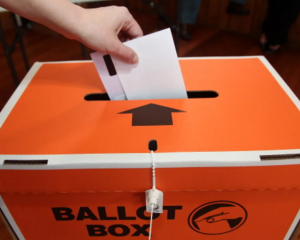
President Donald Trump has announced a 25% tariff on all aluminium and steel imports into the United States.
His decision followed tensions over his threat to impose blanket tariffs of 25% against Canada and Mexico and 10% against China. Trump has repeatedly threatened Canadian national sovereignty and made territorial claims against Greenland and Panama. Tariffs against the EU loom.
His war of words with Canada and Mexico was momentarily paused by a month-long truce. Trump’s metals tariff announcement has reignited those tensions.
The new tariffs make no economic sense. Neither Trump’s first attempt at aluminium tariffs nor former president Biden’s investment in critical material infrastructure prevented the closure of US aluminium smelters. Trump’s targeting of Canada and Mexico will damage the US aluminium industry further.
Like the automobile industry, the North American aluminium industry is closely integrated. On February 1, 2025, US Aluminum Association CEO, Charles Johnson, warned tariffs on Canadian and Mexican imports would harm the domestic industry. The closure of US aluminium smelters in Kentucky, Missouri, and Washington State between 2022 and 2024 stand testament to the failure of Trump’s previous tariffs.
During the 21st and 20th centuries, the US has been reliant on imported Canadian aluminium ingot for many reasons: US multinational aluminium companies, such as Alcoa and the defunct Reynolds Metals Company, understood the advantages of cheap hydroelectricity for an energy-intensive industry and access to markets when siting smelters in Canada: the sheer scale of US demand massively outstrips domestic production and overseas production is essential.
And whereas previous administrations might have heeded the lessons of the Smoot-Hawley Tariff Act of 1930, which ended in a tariff war and worsened the severity of the Great Depression, this White House seems little interested in learning from history.
Trump’s rationale is political. Trump justified new tariffs thus: “Our nation requires steel and aluminum to be made in America, not in foreign lands . . . It’s time for our great industries to come back to America. We want them back in America.”
He purposely uses deliberative rhetoric to shore up support, to deflect attention from his Department of Government Efficiency and its many legal challenges as it assaults America’s democratic institutions. Steel, long a political touchstone in the US, is emblematic of the deindustrialisation in North America’s "Rust Belt" that has radically altered the nation over the past half-century.
The US shed 11.5 million manufacturing jobs between 1980 and 1997. Those numbers hide the stories of industrial closures, accompanied by large-scale divestment, rising inequalities, and cross-generational scars impacting towns in middle America.
It is important to highlight that US multinationals also asset-stripped part of Canada’s industrial base during this period. International Monetary Fund economists described deindustrialisation as "not a negative process, but a natural consequence of further growth in advanced economies".
Those living at the ground zero of industrial closures were confronted daily by the profound economic and social consequences as steel mills, mines and factories closed. Protectionist measures for the steel industry have repeatedly been used by US politicians to cast blame on the bogeyman of the hour.
In the US unfurling tragedy, Trump is using aluminum also to foment a moral panic against Canada and Mexico.
What does this mean for New Zealand and the South? First, guaranteeing the future of NZAS with a 20-year power supply contract was a wise move; good for the South and for New Zealand’s exports. It preserves an industry that generates important export earnings.
New Zealand was not exempt (unlike Australia) from Trump’s first section 232 tariffs. Our major export markets for aluminium ingot are Asian and EU countries. Therefore, we have some protection from the president’s moves.
Rio Tinto’s acquisition of Sumitomo’s share in NZAS means it is now a wholly owned subsidiary of the Anglo-Australian company integrated further with its plants in Australia.
The New Zealand government must remain vigilant and be ready to take appropriate action to protect the country’s economic interests, which is important with the prospect of future trade negotiations with the US. We must now pay even closer attention to how New Zealand’s growing agriculture exports to the US may be affected by Trump’s mercurial mood.
The trade deficit between the two countries has narrowed in recent years (some of this can be accounted for by tourism) but that does not mean that New Zealand will avoid Trump’s attentions; we must be wary of how he will use trade to deflect from growing domestic unrest and his assault on US democratic institutions.
The late Canadian statesman Pierre Trudeau characterised Canada’s relationship with the US as akin to sleeping next to an elephant; this elephant is neither friendly nor even-tempered and may well create significant diplomatic waves which could disturb the prosperity of Aotearoa New Zealand.
• Andrew Perchard is honorary research professor at Otago Business School, University of Otago and has acted as an adviser to the aluminium industry.











